|
|
Joseph Aronson. The Encyclopedia of Furniture. — Third edition, completely revised. — New York, 1965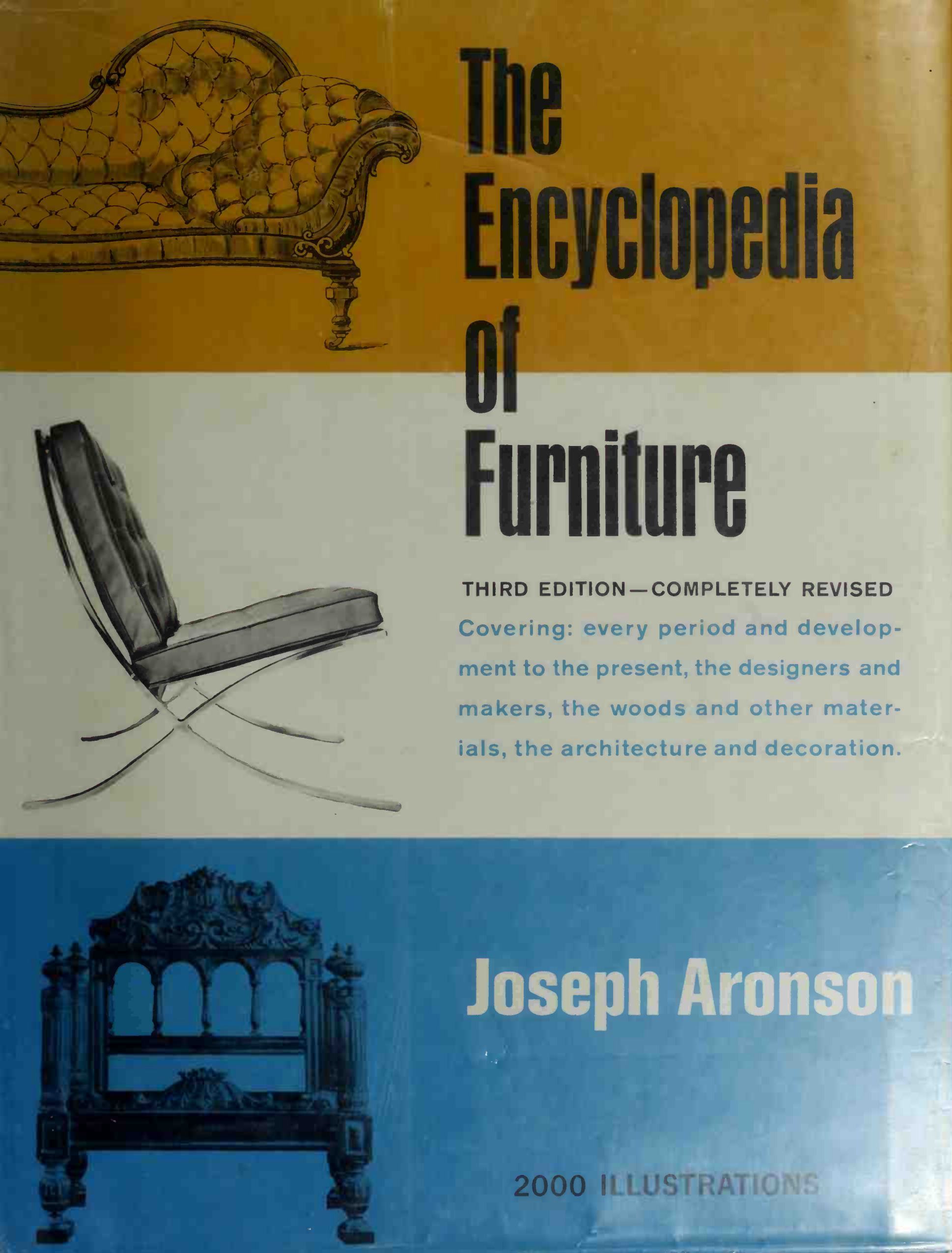 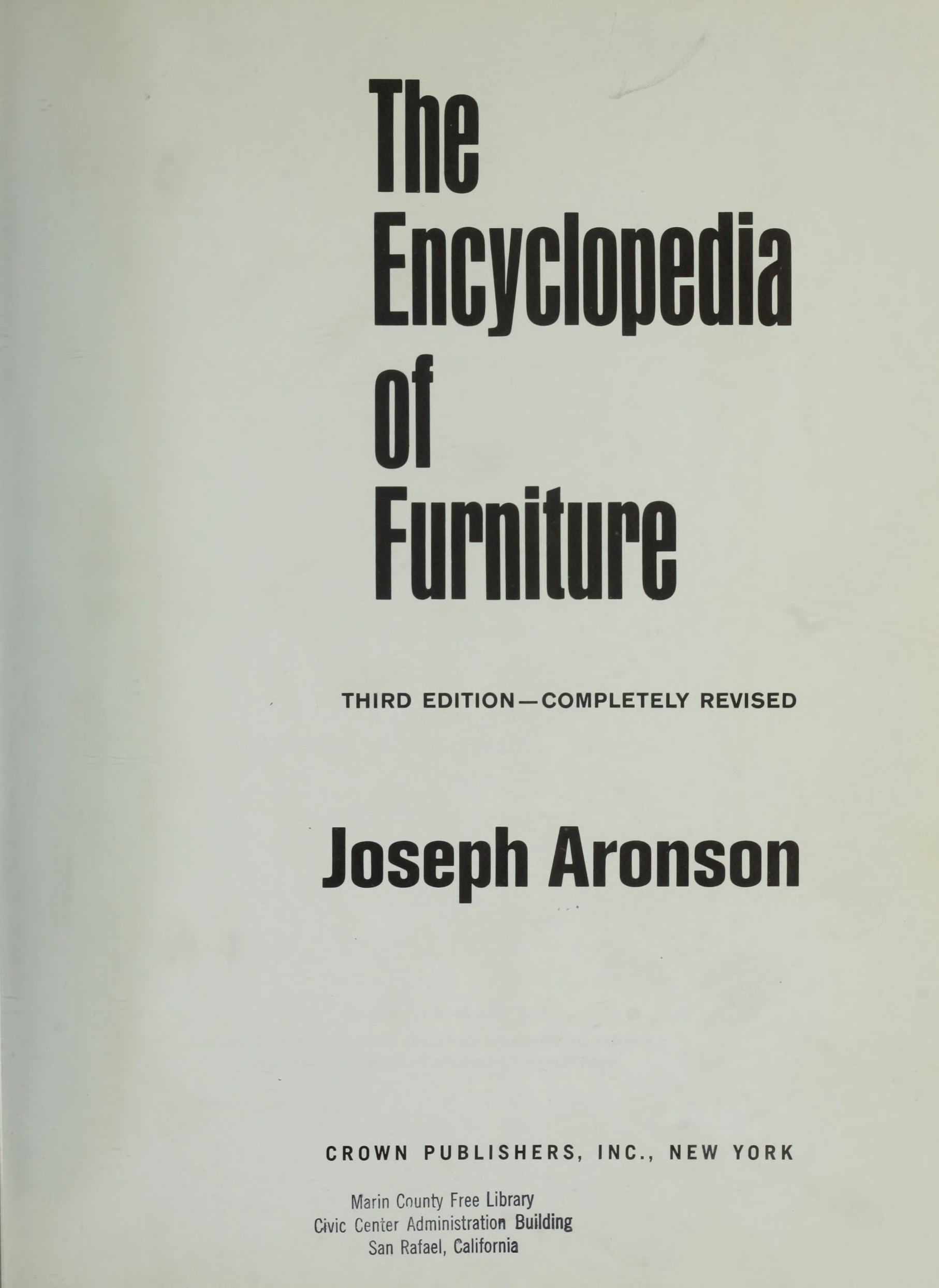 The Encyclopedia of Furniture / Joseph Aronson. — Third edition, completely revised. — New York : Crown Publishers, inc., 1965. — IX, 484 p., ill.FOREWORD TO THE FIRST EDITION
It has long seemed to me that the art and industry of furniture sorely needed a convenient encyclopedia. Everyone who buys or uses furniture, who makes, designs, or sells it, collectors, architects, decorators and students must feel frequently the singular lack of a handy reference work for the checking of details, the verification of periods, the inspiration of designs, the nature of materials, and so on.
In preparing this work I have kept that need before me. Of course, a balanced condensation of the vast body of furniture history and technique could not be achieved without the sacrifice of an infinity of detail, all interesting and pertinent to the critic and the specialist. That sacrifice seemed justified in the cause of compactness. If accuracy, accessibility and thoroughness could compensate for brevity and limited details, it seemed that a handy one-volume encyclopedia could prove useful and valuable for most needs. I have sought therefore to provide dependable initial information. The seeker after more detailed knowledge has available a vast library from which the bibliography (page 476) is selected as having been of most assistance to the writer.
One picture, say the Chinese, is worth ten thousand words. This numerical ratio based on the quantity of photographs offered in this volume would probably satisfy the writer and the reader in their joint temptation to delve into the endlessly fascinating details of furniture lore. The major part of this book consists of monographs of the important items of furniture knowledge, supplemented by some 2,500 separate definitions and descriptions. The larger subjects or classifications — America, Chair, Construction, France, Gothic, Modern, Wood, and so on — are treated at some length and are related to the arrangements of pictures. More than half of the book is devoted to photographs, in the hope of effecting the economies suggested by the aforementioned Chinese proverb. Thus Number 170, a Gothic cupboard of Flamboyant style, is grouped with cabinets but is also listed by number under flamboyant. The sequence of types pictured in these groups is roughly based on the chronological development from the basis or prototype; it also seeks to demonstrate the flow of influences over national boundaries, and the bridge of time as well as locale in these developments.
That omissions of more or less importance exist is a foregone conclusion, their importance depending on the point of view. The accuracy of material presented is often a matter of choosing between conflicting sources; for more palpable errors, I beg the reader’s indulgence in advance. In this connection it is interesting to observe that actual furniture relics of older days are sometimes less dependable as sources of knowledge than are the old documents, engravings, and paintings.
Joseph Aronson
New York, N.Y.
October 10,1938
FOREWORD TO THE THIRD REVISED EDITION
The Enjoyment of Furniture, in common with other arts of cultivated living, has in a generation achieved the status of an art itself. There is useful and philosophic pleasure in recognizing, in the evolution of utilitarian design from artifact to art, a key to the manners, mores, and means of other times and places.
The simple fact that a vade mecum to this art survived over a quarter of a century is significant. During this period I have received a stream of generous and constructive criticism, resulting in: the format of this edition, which intends primarily to offer a quicker correlation between pictures and text; addition of material on the 19th century; substitutions and relocations to emphasize particular points; and the review of illustrations as pertinent to the broad subject in style and provenance.
The format, with its continuous dictionary style, endeavors to bring illustrations into close sequence with the text, to minimize page turning, to visualize and verbalize simultaneously. The ideal balance is of course never achieved, since illustrations simply do not occur in such neat sequence. Let us confess that most evolutionary steps are theoretical — traceable only after the fact; one can hardly say that form A actually inspired form B. Chronologically, the reverse may often be true. This merely proves that style development is never the work of an individual; rather, the large maturing of style is the product of a whole society, homogeneous and one-purposeful.
The enlarged view of 19th-century furniture is a bow to the passage of time and widening horizons. As the century recedes into perspective, its Industrial Revolution gains significance as the springboard for all 20th-century philosophy of design. Grandparents become ancestors, and the young no longer try to hide the shame of ancestral esthetic indiscretions, but are charmed by the naïveté, the philosophic gropings, and the inept grapplings with technical innovations and discoveries.
Whether or not late-19th-century furniture may legitimately be called antique is a question for antiquarians. It is furniture; and for better or worse it sums up emotions and capabilities and perceptions of its makers, the sentiments of a wide range of impulses reflecting a whole milieu. This book offers no esthetic judgments. It seeks only to illustrate those forms and styles that in their time gave satisfaction to their makers and users.
Parenthetically, I make no claim for the authenticity of any piece pictured in this volume. A piece whose origins and history must be reconstructed from the physical evidence of its material leaves much to the imagination and veracity of the “expert.” Expertise is an occupation beyond the province of the student of the art of furniture. Before mass production, virtually every piece was unique, the concept and creation of an individual working whimsically and often capriciously. We can identify some motives and manners; finally we are compelled to say that if this or that detail is not demonstrably true, it ought to be so by deduction. Dates, most of all, are a snare and a delusion. They are used here less for historical certification than to try to place a feature of a style within a historical framework. The collector will do well to precede every date with a good broad “circa.”
One group of suggestions came from those who felt that artificially narrow limits had been placed on the geography of furniture design. I am convinced that the mainstream flowed from Italy to France with the spreading Renaissance; thence all over Europe to merge with or to obliterate the native arts peculiar to isolated locales. With the end of isolation usually came the end of native art. Every country absorbed what it wanted of outside influences, and reissued its version of what it accepted. Thus all of Europe and Europe’s colonies developed styles tributary to the mainstream. These are generally too parallel to the source, too little varied in essence, to justify extensive differentiation in a volume dedicated to conciseness.
England merits disproportionate attention because the domestic scale in furniture, the felicity of everyday living, as we know it, and the prototypes of most American furniture developed there. And, of course, there is substantial representation of American furniture, for all its provincial derivation from English furniture.
The question of nomenclature was solved arbitrarily in favor of conciseness. This removes “stylish” names, trade jargon, and the faintly precious use of foreign terms. The French have good, precise terms for many articles of furniture, but liberal usage here would weight the book too heavily with bilingual redundancies. Similarly, the fashionable names beloved of the merchandising world tend to be too ephemeral, and were sacrificed to brevity.
Joseph Aronson
New York, N. Y.
November 1, 1965
CONTENTS
FOREWORD VII
ACKNOWLEDGEMENTS IX
TEXT 1—475
BIBLIOGRAPHY 476
A GLOSSARY OF DESIGNERS AND CRAFTSMEN 480
Sample pages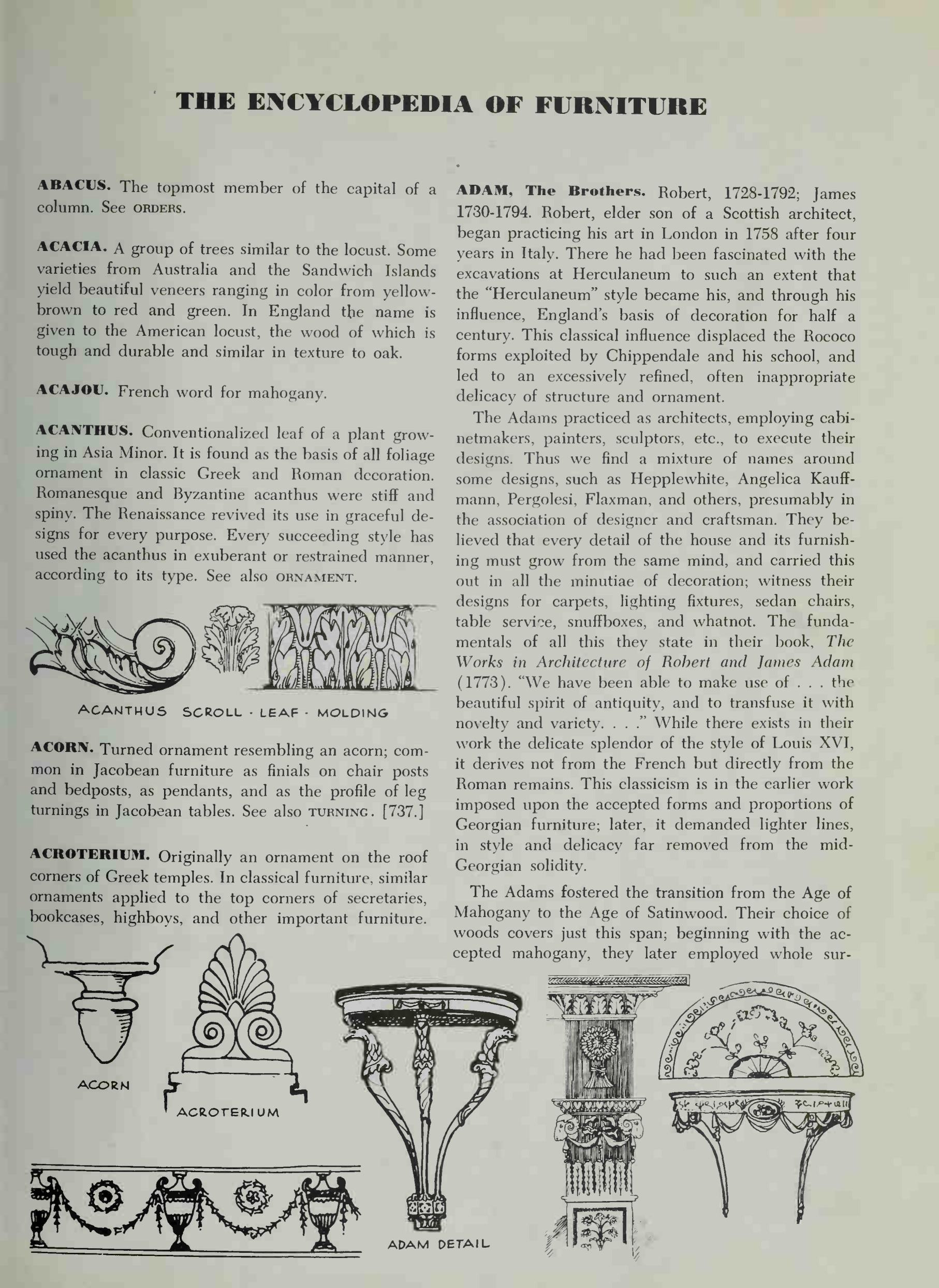 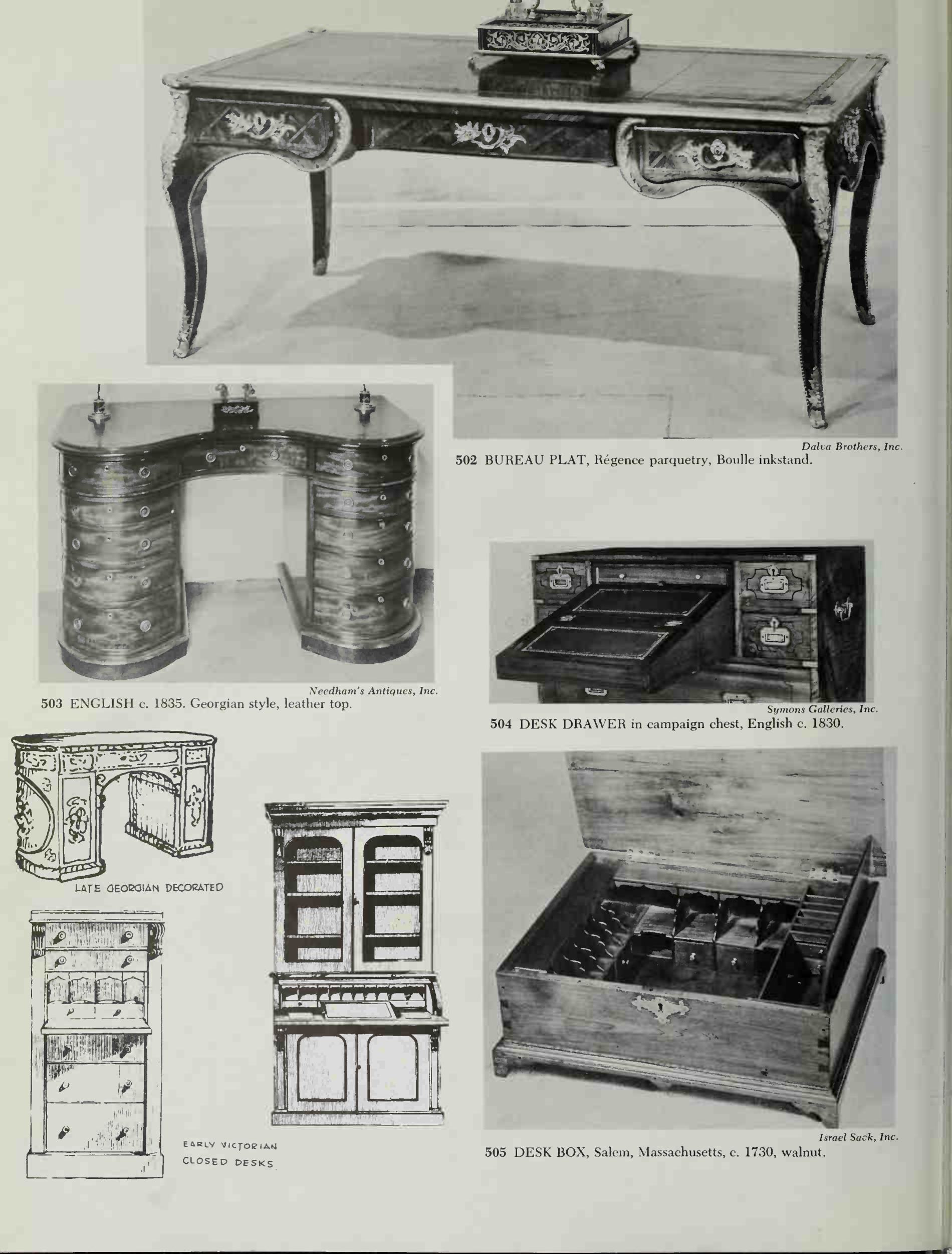 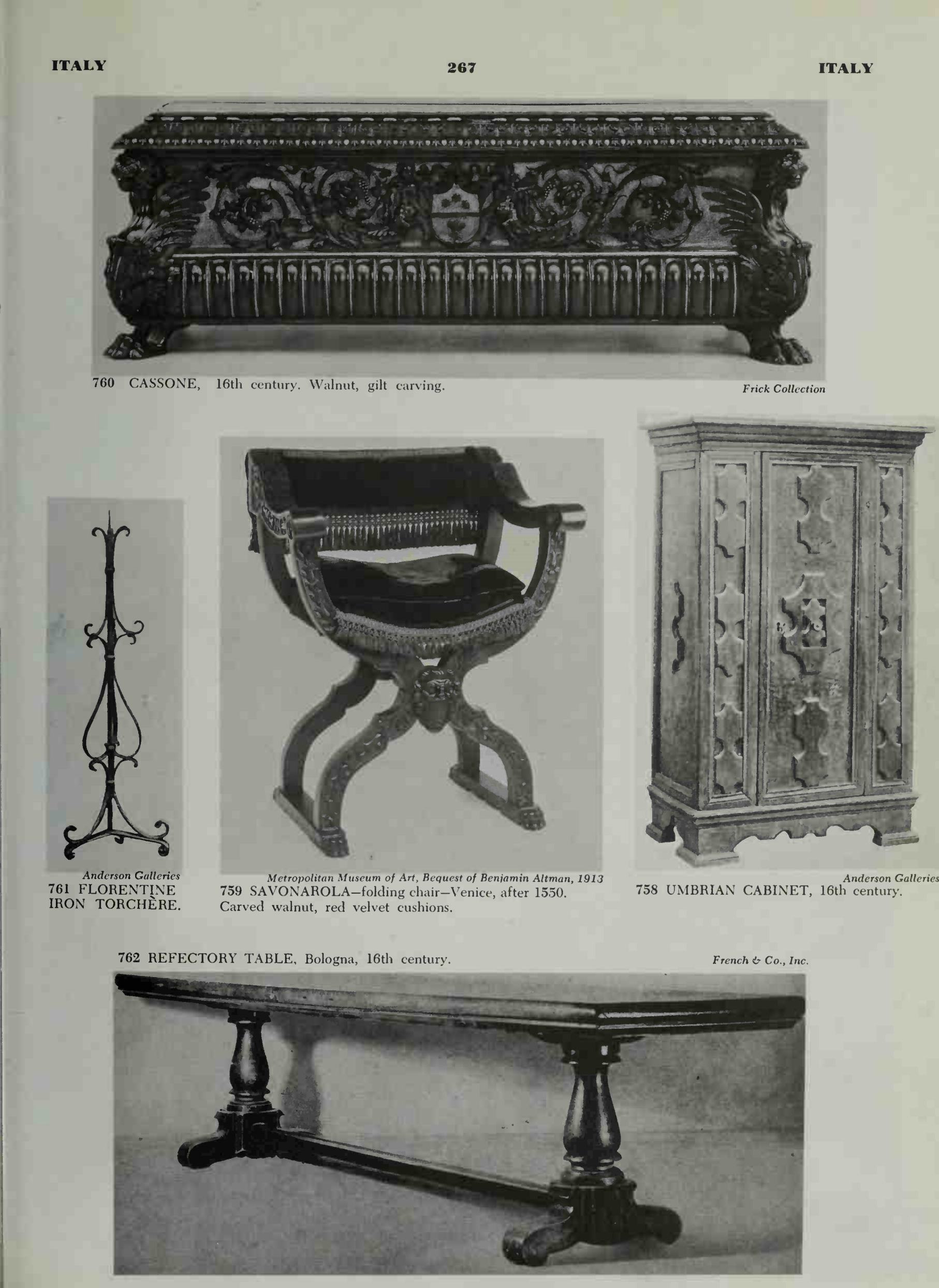 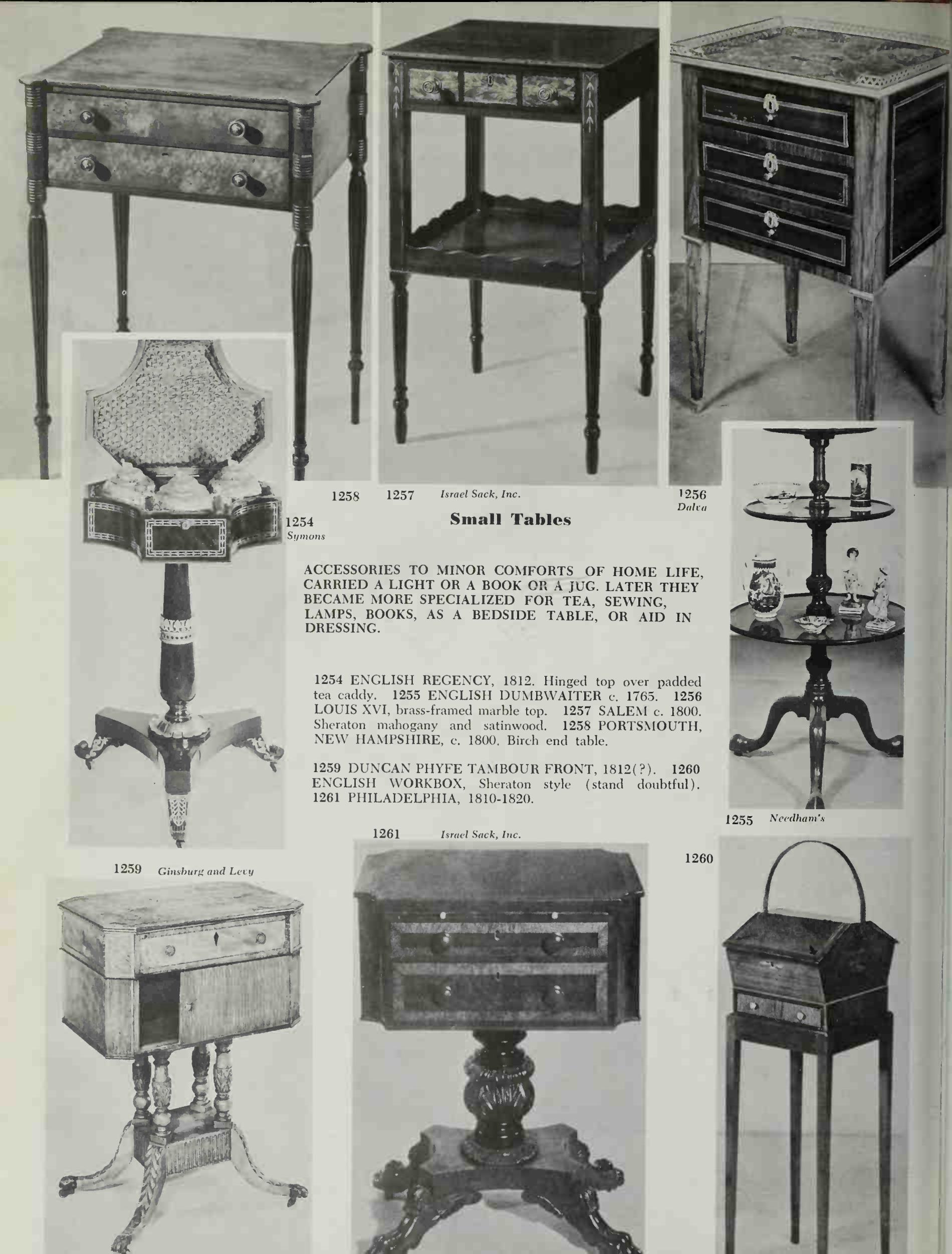
Download link (pdf, yandexdisk; 84,3 MB).
The electronic version of this issue is published only for scientific, educational or cultural purposes under the terms of fair use. Any commercial use is prohibited. If you have any claims about copyright, please send a letter to 42@tehne.com.
19 апреля 2021, 22:26
0 комментариев
|
Партнёры
|






Комментарии
Добавить комментарий